The exposure triangle includes aperture, shutter speed & ISO. Another term for aperture is f-stop.
Table to Contents
What is f-stop?
The f-stop is in reference to the amount of light that you camera lets in. In fact, your f-stop is directly correlated to your lens and how wide your lens can go.
When talking about f-stop people will use the term – smaller f-stop. This means that the number is actually a higher number when you think of it mathematically. For example, f/14 is a smaller f-stop compared to f/1.8.
Another term is wide open. This means that your f-stop is as wide as it can go. That means that if you have a lens that can go to f/1.8 and you shoot at f/1.8 then you are shooting wide open.
If someone tells you to “stop down” on your aperture they are also referring to using a smaller f-stop (bigger mathematical number). It can be confusing but don’t let the terminology confuse you.
Read more: Complete Guide to Understanding the Exposure Triangle
What does increasing the f-stop do?
When you increase the f-stop, meaning you are using a smaller number, then you are going to have more of your photo in focus. Remember the more wide open your aperture is the less of your photo is in focus. In addition to having more of your image in focus, you decrease the amount of light coming into your meter.
A wide aperture allows in a lot of light so the opposite happens with a smaller f-stop. To counter balance this you may need to decrease your shutter speed or increase your ISO to bring in more light.
Is f-stop and aperture the same thing?
Sort of. Photographers will sometimes interchange these terms however there is a slight difference. The aperture is the actual opening of the lens diaphragm. This affects how much light the lens lets in. However, the f-stop is the ratio of the focal length and the aperture diameter.
When to use a wide or smaller f-stop
Once most photographers figure out how wide of an f-stop they can shoot they love to shoot around f/1.8. This is because they think this is the only way to get the blurry background with bokeh they are looking for. However, that is not always the case.
In fact, I tell my students often to not shoot at f/1.8. Learning to use a variety of f-stops in your photography will help you create interesting images.
Below are seven reasons why you should rebel against a wider f-stop and shoot with a smaller f-stop.
1. Photographing a fast moving child or subject
We all love bokeh (you know, that blurry background) and using a wide aperture like f/1.8 is sure to help you get it. However, that wide aperture also makes your plane of focus smaller and makes it harder to get your focus just right.
When you’ve got a quick moving child, you need some wiggle room. You don’t need to go extreme with f/22 but consider closing up your aperture some to f/3.5 or so. This will still allow you to get some good bokeh.
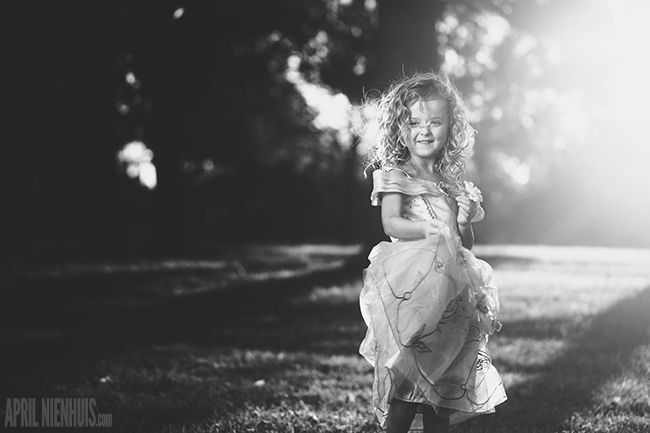
2. Landscapes photography with a smaller f-stop
This world is beautiful and sometimes we want to see every detail we possibly can. When photographing landscapes, it’s common to shoot at a small aperture to get as much in focus as possible. I prefer around f/22 to be able to capture the clarity and details that surrounds me.
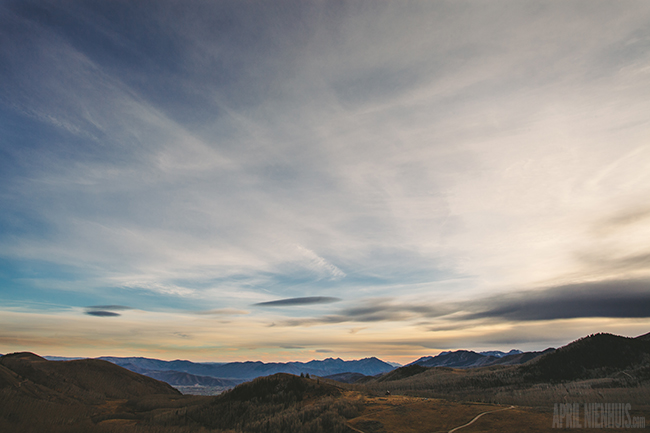
3. When photographing a group
Getting one person in focus at f/1.8 is hard enough but add in a few more people and it gets extra tough. How small your aperture needs to be is going to depend on how close you are to the group and whether they are on the same plane of focus or multiple ones.
For example, in the following image I am far away from them with a long lens. Since they are hugging, the focal plane for each child doesn’t differ too drastically and I can get away with an f/4 aperture.
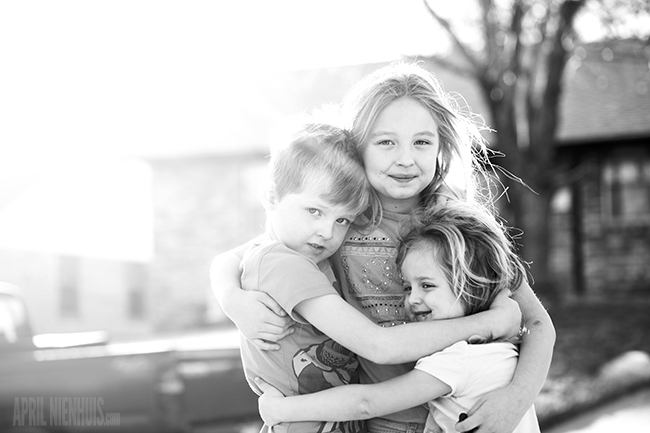
However, being at f/4 with the below image wasn’t cutting it since I was so close to the group and there are 3 different focal planes. This is an instance where a smaller aperture of f/8 was needed to get everyone in focus.
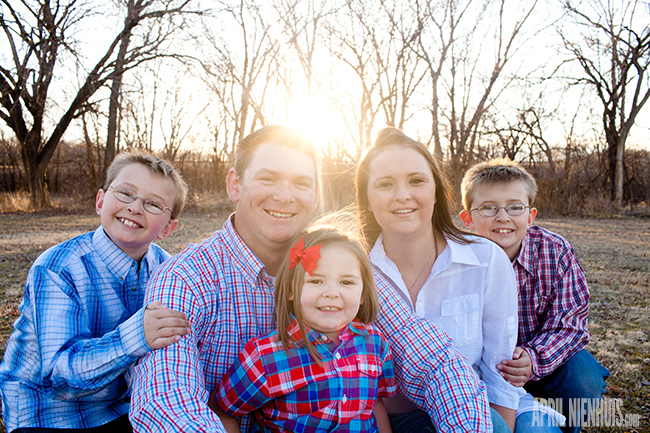
4. Include a clear focus of the atmosphere
Sometimes your surroundings are important to the story of your photo. In the photo below, it was important to see both the definition of the clouds in the background as well as the elements in the foreground.
Perhaps you’re photographing a portrait of a bride and groom in front of the church they’re getting married in? The church is an important detail too.
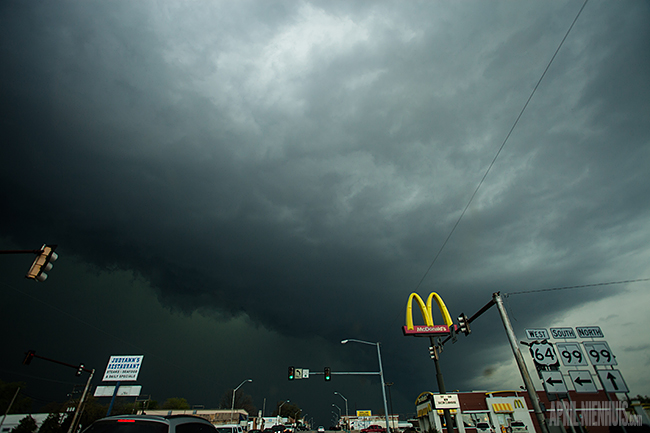
5. Create a starburst effect
Starbursts have a knack for making bright items clean, shiny, and fancy. In order to get a good starburst, you need a small aperture. The smaller the better. If you don’t have enough natural light to embrace a small aperture you may need to consider including a secondary light source or a tripod to embrace a slower shutter speed. Starbursts are especially fun with the sun or Christmas lights.
Read more: Everything You Need to Know for Unique Lens Flare Photos
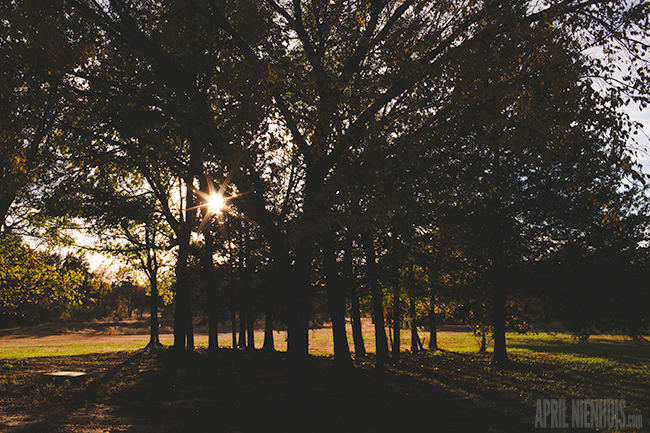
6. The night’s sky
You really want a nice solid focus of the stars when photographing them. The best way to do that is to use a small aperture. You’re working with a slow shutter speed so you might as well slow it down a little more in order to use a smaller f-stop. Don’t forget that your best bet for astrophotography is when there’s a new moon and in a place with very little light pollution. If you have trouble keeping up with the moon phase, I’d suggest downloading the Star Walk app.
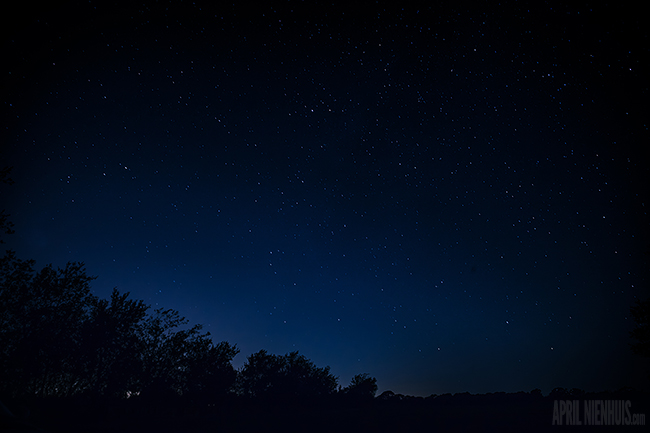
7. Macro photography
With macro photography, your depth of field is much more narrow than when taking a portrait. Because of that narrow depth of field, you need to use a smaller aperture in order to get more in focus. Being that close with a larger aperture can create a fun and pretty abstract sort of look but when you want all the details, think of using a smaller f-stop. The below photo was shot at f/8 and you can see how I got a good deal in focus but because I was so close, I still got some lovely bokeh.
Read more: How Focus Stacking will Help you Create Sharper Photos
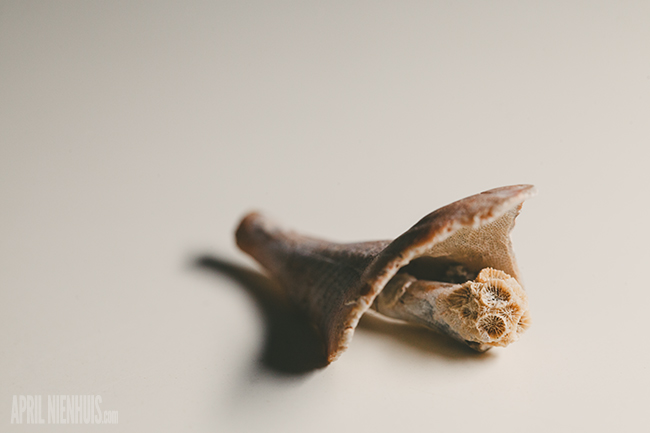
Frequently asked questions about f-stop
The f-stop tells you what setting your aperture is set to. It is written as a fraction f/number. For example, it could be f/8 which reads as f-stop 8.
A higher number f-stop or often described as a narrow f-stop allows more of your photo to be in focus. As mentioned above there are a variety of times where you may choose to use a higher f-stop. However, a photo can be just as powerful with a wider f-stop (smaller number). It really depends on the look you are going for.
The lower your f-stop number the more light is coming in. For example f/1.8 will bring in more light than f/4. But it’s important that a wider f-stop will not only bring in more light but it also has less of the image in focus.
It really depends on the situation but I would say I often shoot at f/3.2. This allows in enough light for most situations plus it gives me wiggle wrong for nailing my focus when photographing my children. Keep in mind that you don’t have to shoot wide open at f/1.4 or f/1.8 just because your camera can. You can still get a blurry background that makes your subject pop at f/3.2.


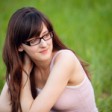





Love this! It drives me crazy when people always shoot at 1.4! I did not know that about starbursts! That first picture is stunning!
Thanks, Bridget! Starbursts are fun – I hope you give one a try :)
Love it! I’m just working on this, so I appreciate this article! Thank you for giving suggestions on the f-stop #s. I just took one of my little boy where one eye is in focus, and the other is not! He was tilted. I’m learning! I read another article on here (I think) that said focus is everything and I completely agree. It could be the best pic in the world, but if focus is off, then you can trash it. Thanks for the article!!
You’re right, focus means so much. If you just barely miss focus, it really can ruin a picture. If it’s going to be out of focus, you have to do it with intent :)
Thank you for this great article, love that you included photos with the f stops used…. I did now know to use a smaller f stop for macro shots, for some reason, I thought the opposite…
I’ve definitely shot macros at f/2.8 or so before but when I want everything in focus like a set of wedding rings, gotta go smaller like f/10 or more.
Thank you! I’ve been working on when to use what F-shop and still have lots of questions and experimenting to do. This will be great to incorporate!
Glad it was helpful, Shelly!
This was a great reminder! I’d love some tips on getting larger groups in focus!
Two ways to get more in focus is to either use a smaller aperture or to scoot back away from your subject(s). Or both. A good way to practice is to line up some stuffed animals and shoot at different apertures and distances so you can see the difference in those changes :)
Just love your stuff. Always seem(ed) to have shot wide open. Not anymore! Thank you. All the way from South Africa!
Thanks, Max! Wide open is fun but don’t limit yourself to just that. Smaller apertures can be fun too :)
Thanks for this article- it will probably seem counter intuitive for me but your pics tell a different story. I’ll definitely give it a go:)
Like I tell my workshop students, you don’t have to like it but I encourage trying it, you never know if you’ll like it or not :)
Great article April! Thanks for sharing!!
I loved sharing and I’m so happy you enjoyed it, Tish!
The first thing I did when I got my 35mm f/1.8 lens was to shoot all things at f/1.8! While it’s great for some shoots and photography subjects, like you’ve illustrated here, need to remember to go up a few f-stops too.
I am glad you posted this. A smaller aperture comes in so handy. Both large and small have their use; IMO the wide open look is overdone and played out. Sometimes it’s nice to get BOTH eyes in focus, or the whole face in focus….or the bride AND groom in focus, or the whole group in focus. :)
Great article April! I love your work. :)
Love the title, and so much that evening sky!
great article and a good reminder to switch it up now and then!! thanks! :)
Misleading title is misleading. Do you mean a smaller aperture (ie; a larger f-number)?
When referring to the f-stop it is opposite of what you would think :)
Yes, when referring to f-stop, the numbers move opposite to what you think. Smaller f-stop numbers mean larger aperture size and vice versa. That still means that the title of your article is wrong since you are arguing within the body of the article that there are times when a smaller aperture (a larger f-stop) works better. So the title of your article should be ‘7 reasons to use a LARGER F-stop’.
Hengshui Haijiang Filter Press Group Co., Ltd., founded in 1985, has total assets of RMB1.52 billion, occupies a total area of 800,000 square meters, and employs 3,000 staff members, including 98 senior engineers and technicians and 319 mid-level engineers and technicians. Over the past 25 years, adhering to the corporate tenet of “Ceaseless Self-improvement, Country Repayment by Industry “, Haijiang Group has become the largest solid-liquid separation manufacturer in China with the most complete specifications and the best quality after high-speed development.
Filter Plate http://www.hbfilterpress.com/
The company covers an area of more than 50 mu. Daily output is 5 tons for edible gelatine and 5 tons for pharmaceutical and industrial grad gelatine. It was the first enterprise to pass gelatine export qualification register certificate from Export and Import Inspection and Quarantine of People’s Republic of China. Code is 1300DZ0201. The company adheres to business tenet of quality oriented and credit first to constantly increase reform strength and improve product quality. The company actively exploits domestic and foreign markets under the support of domestic and foreign customers. Our image and products has obtained high reputation and popularity at home and abroad. Product quality gets deeply trust and good evaluation from customers. Eighty percent of edible gelatine and industrial gelatins are exported to international market. We sincerely invite friends at home and abroad to guide and visist, and cooperate with us to create a better future.
Industrial gelatin http://www.hanhaigelatin.com/
HEBEI JINWEI CHEMICAL CO., LIMITED is one of the world’s leading manufacturers of industrial nitrocellulose, a film forming resin used in the inks and coatings market. It is a high quality, supremely flexible material that demonstrates outstanding functionality, excellent value for money and high standards of safety. It delivers genuine competitive advantages.
nitrocellulose http://www.nitrocellulosejw.com/
So many photogs like to shoot wide open. It was a trend started by famous celebrity photographers. It’s nice to have bokeh but yeah open your mind and adjust aperture based on what you are trying to achieve. Bokeh exists at other f-stops too, so it’s nice to have bokeh and also have your subject in focus if you shoot at 3.5 or whatever.
Why is it such a trend and why do some photographers say “I only shoot wide open” -arev they act like it’s some mystical secret that they do it and that the people who don’t aren’t as skilled of photographers if they can’t get everything in focus at f 1.8? Why ?
[…] want to get everyone’s faces in focus. Therefore, using a smaller f-stop will help make sure everyone is in […]
Great article. I am just getting into photography.
Great blog post, the distance from the subject to the lens with a smaller depth of field was something I didn’t realize when I was first starting out. It would have saved me a lot of out of focus shots had a read this years ago.